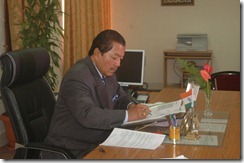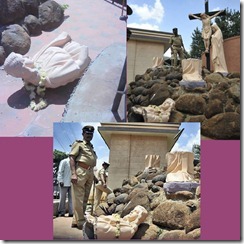By R Shankar
In the P J Thomas case, the silence of the PM is as good (rather bad) as telling a lie

Prime Minister Manmohan Singh is known for his silence. When prices of onions, vegetables and food items hit the roof, he remained silent; when former Telecom Minister A Raja thumbed his nose at a PMO directive on 2G spectrum, Singh remained mum; when there was a furore over money stashed in Swiss banks (remember the 100-day promise of Singh?), the PM looked the other way. The only time when Singh mumbled a reaction was when industry honchos were red-faced over the Niira Radia tape leak.
In all these frequent bouts of silence, the PM can be accused of chronic inaction, not lying. But in the case of the stand by the Government (and hence the PM) in connection with the case of the appointment of Central Vigilance Commissioner PJ Thomas, an uneasy shadow of falsehood is directly on the Prime Minister.
Here are the three lies that Manmohan may find it difficult to come clean.

Lie 1
The government claims that when the name of Thomas figured in the list nominees for the post of next CVC, the panel comprising the PM, the Home Minster and Opposition leader in the Lok Sabha was not aware that the IAS officer was an accused and that a chargesheet was pending against him in the palmolein import scam .
This is what Attorney General G E Vahanvati told the Supreme Court on Thursday: "The fact that he (Thomas) was an accused in a pending case was not informed. The fact that the state government gave sanction under Section 120B was also not informed. The only information was the bio-data, which did not include these matters. The committee goes by what is placed before it,"
This is a lie on two counts: Opposition leader Sushma Swaraj had raised strong objections to the appointment of Thomas. In her words to The Indian Express: "What the government has stated in the Supreme Court today is totally wrong. I brought to the notice of the Prime Minister and the Home Minister that a case is pending against him. I specifically mentioned about the palmolein case."
The government now says that Sushma's objections were not part of the record of the panel's proceedings. But Sushma has an answer. "The Home Minister (P Chidambaram) said he (Thomas) has been exonerated in that case." The PM later said "a decision has to be taken today itself as the new CVC has to take oath on Tuesday."
And the government fig leaf to hide the embarrassment? That Sushma just wrote `I disagree' on the proceedings of the meeting and did not mention why she disagreed with the name of Thomas. Then for what joy did Sushma write her dissent note?
Assuming that the palmolien case was not discussed, was it not the job of the PM and the Home Minister to find out why the leader of the Opposition did not agree with the name of Thomas? Will the Prime Minister and Home Minster clarify if the palmolein case chargesheet was indeed discussed at the meeting? Or will the PM and HM hide behind niceties and say that these discussions cannot be made public?
But you can bet your last shirt on this: That the Prime Minster will continue to remain silent.

Lie no 2
The Supreme Court was told that the bio-data of Thomas did not mention the chargesheet against Thomas. How can this happen? The names are finalised after due diligence by the Department of Personnel and Training (DoPT). This panel, it seems, gave details about the educational qualifications of Thomas but did not mention his criminal liability as an accused in the palmolein import scam pending prosecution for almost 20 years.
Nor did it mention that the Kerala government, in November 1999, had already granted sanction to prosecute Thomas in the case under Section 120 B (criminal conspiracy) of the IPC.
Will someone in the DoPT stand up and claim responsibility for this? It is hard to believe that the bio-data was cleared without any reference to the pending case. Even when the aam admi applies for a passport, there are a series of enquiries, including a police verification. In Thomas' case, his file must have gone to Kerala for clearance as he was the chief secretary there during the tenure of the late K Karunakaran.
If the fact regarding the chargesheet was deliberately hidden from the panel, it is the duty of the Home Minister to find out why this was done. But all this becomes bunkum when one considers the fact that the leader of the Opposition did point out to the chargesheet at the panel's meeting.
But the government's admission is dangerous. For any appointment to a key post in Delhi, a criminal too can slip through. All it needs is for the DoPT to delete/hide his criminal background and forward the same to the panel headed by the Prime Minister.

Little wonder that the court asked Vahanvati if the government could consider a person chargesheeted in a corruption case for the CVC's post.
"Yes is the answer. In the light of the fact that he has been cleared in 2007 leaves the chargesheet and sanction without any relevance," said Vahanvati.
"What was the zone of consideration? Was Thomas the seniormost officer?" the court asked, asking what made Thomas "suitable" over the other "eligible" officers.
When the AG replied that there was another eligible officer, Sujit Banerjee, the court asked why he was then kept out of the "zone of consideration".
"If there was a person from an earlier batch, why is he not in the zone of choice?" the court asked, to which Vahanavti said he would "check it out".
Again a case of the government getting caught on the wrong foot.
The bottom line is: How can the Prime Minister be kept in the dark on such an important issue concerning Thomas? Or was it deliberate? Probably only Chidambaram can answer.

Lie no 3
Assuming that the panel was kept in the dark about the palmolein case, was the government also unaware that Thomas was the telecom secretary when the 2G spectrum scam took place? Were the Prime Minister and Home Minister unaware that the 2G Spectrum case was pending before the Supreme Court and that the CVC will have to deal with it?
It is still a mystery why the PM and HM were bent on appointing Thomas. Was a lobby at work? Thomas does not have any experience in investigation or vigilance work -- experience that the CVC will need to posses.
Justice K S Radhakrishnan, who comprised the SC bench, pointed out that prior experience in vigilance, policy making and police administration was a "statutory requirement" for selection to the post in the CVC Act, 2003.
And the government's response? "Perhaps there should be closer scrutiny." How could the government been so careless? Or did it act in ultra haste in clearing the name of Thomas?
The government would have learnt a lesson or two if it would have cared to flip through the pages on earlier appointments to the post. When Atal Bihari Vajpayee was the Prime Minister, the panel constituted to select the CVC had three names in the order of preference. N Vittal was the top-most name. Vajpayee and his Home Minister did not push for Vittal's name. Instead, Vajpayee pushed the file to the leader of the Opposition Sharad Pawar and told him to take his time, make his own discreet enquiries and select any one from among the list, not necessarily Vittal. Days later, Pawar agreed with Vittal's name.
That is what is called transparency in appointment.
But in the present case, the Prime Minster's series of silences tantamount to telling a lie.
As the BJP put it: "This is a scam that reaches straight to the Prime Minister's door. There is no alibi as in this case like (in the case of) A Raja or Suresh Kalmadi."
Source: India Syndicate
 Aizawl, Jan 31 : Women voters in Mizoram have surpassed men in the updated electoral roll released by the state’s chief electoral officer early this month.
Aizawl, Jan 31 : Women voters in Mizoram have surpassed men in the updated electoral roll released by the state’s chief electoral officer early this month.




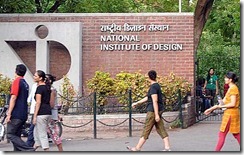

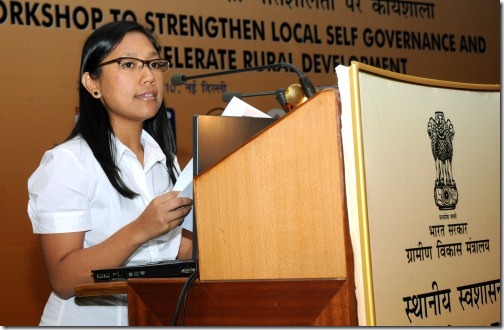
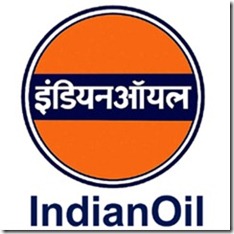
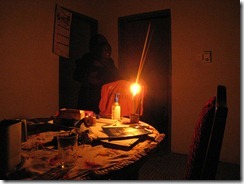








 Why China’s meddling in the Northeast should worry Delhi
Why China’s meddling in the Northeast should worry Delhi 